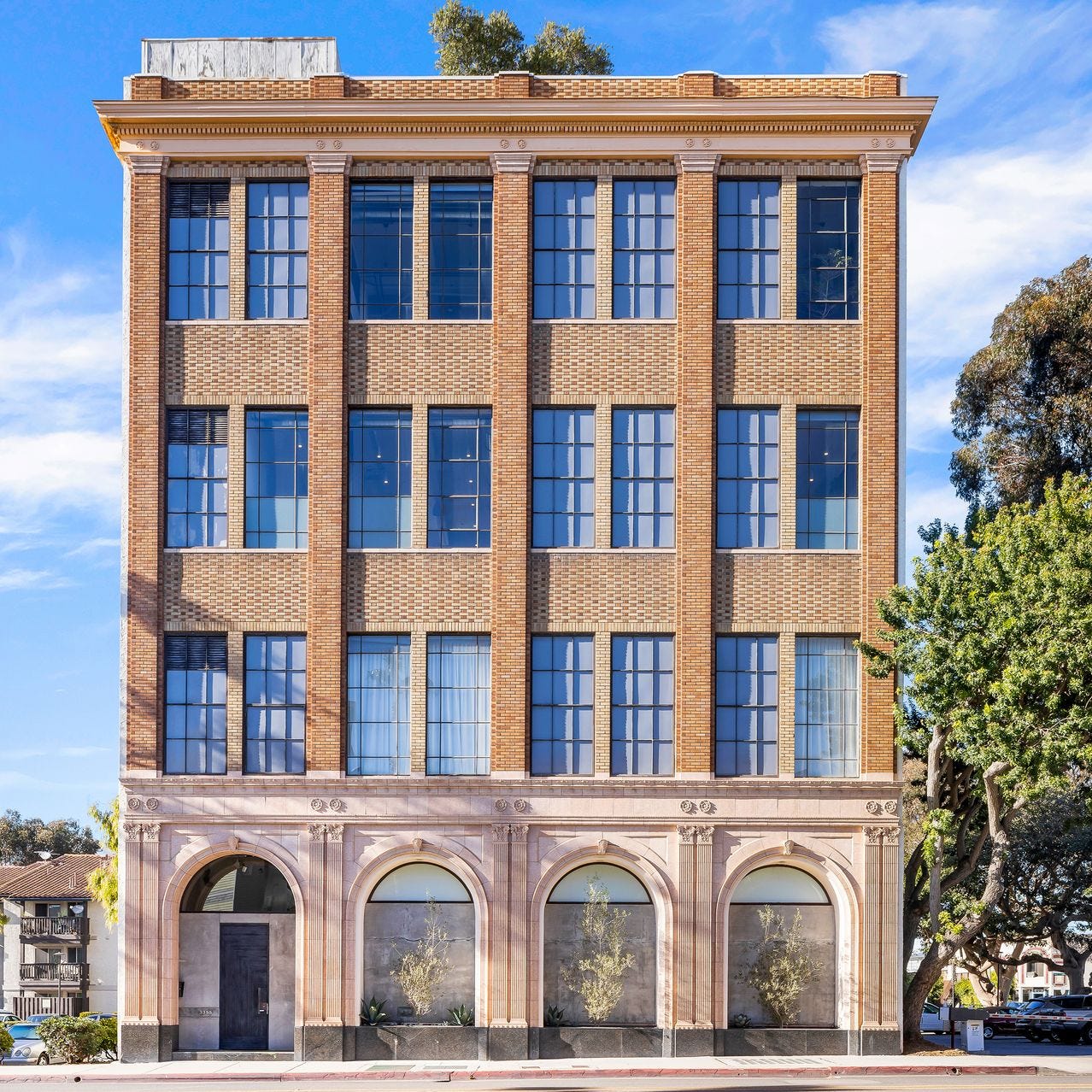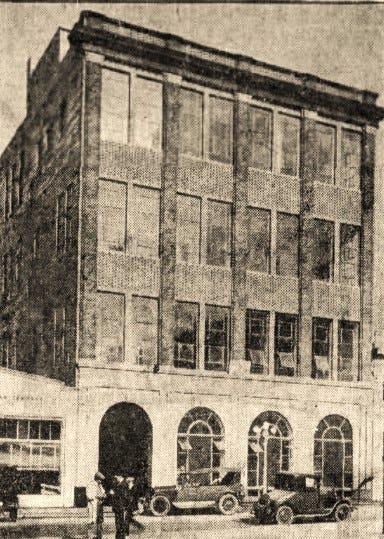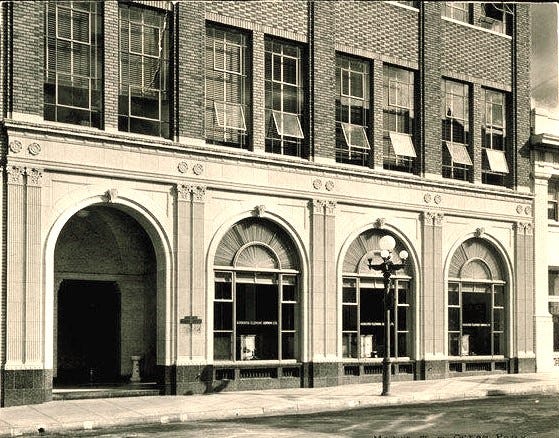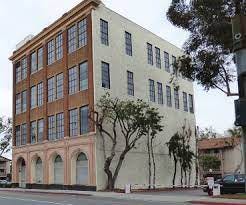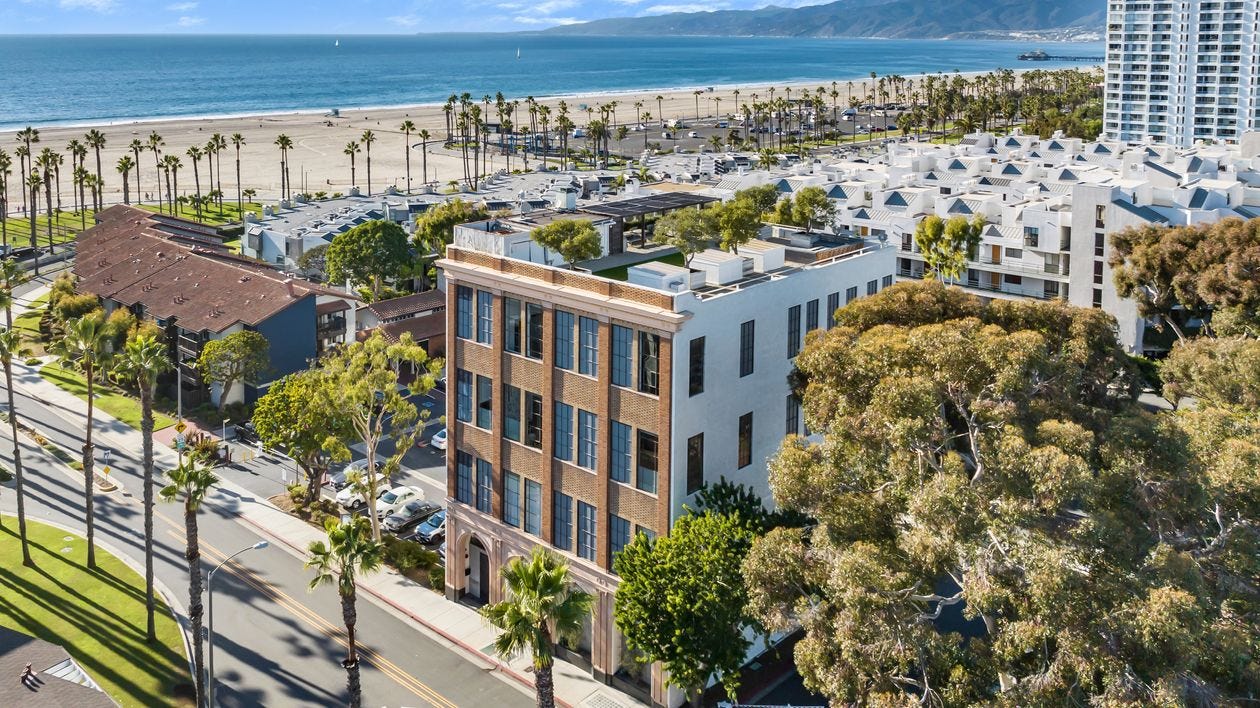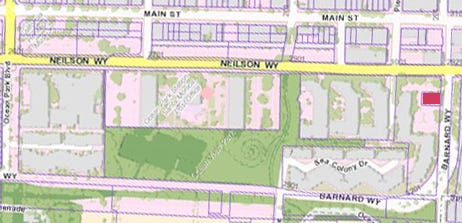The 1926 telephone exchange building is the only structure not moved or demolished in the 1965 Ocean Park Redevelopment Project.
The 4-story (plus basement) Renaissance Revival style commercial building at 3355 Barnard Way1 is constructed in 1926 as offices and a telephone exchange for the Santa Monica Bay Telephone Company.
The building is designed by Italian-born, Los Angeles structural engineer Maurice A. Sasso (1890 – 1971),2 who designed several telephone buildings. The steel frame with reinforced concrete slab floors building has a rectangular 60 ft x 80 ft plan. Constructed with 4 stories, the building is designed for 6 stories to allow future expansion (as is done with other Sasso designed telephone buildings). The 18 ft story heights, to accommodate telephone equipment, result in a tall 72 ft high building.
According to local newspapers, the 1926 opening is attended by “thousands” of Santa Monica residents and 200 employees. The program includes music and dancing.
Santa Monica Bay Telephone Company is acquired by Associated Telephone Company in 1928. Associated Telephone adopts the General Telephone Company name in 1953, and relocates to Thousand Oaks in 1985.

The exchange building is the only structure in the 1965 Ocean Park Redevelopment Project that is not moved or demolished.3 In 1967, General Telephone remodels the building interior - closing windows on three (non street) sides of the building and installing an air conditioning system. Between 1985 and January 1987, the telephone facility is phased-out, as General Telephone removes operations from multiple sites in Santa Monica.
The Eli Broad Family Foundation buys the building from General Telephone in 1988. Real estate developer, Eli Broad and his wife Edythe’s art collection has nearly 2,000 postwar and contemporary art works. The building is to be the headquarters for the Broad Art Foundation’s library, which loans collection works to museums.
To accommodate the Broad’s art collection, the building is re-modeled in 1988. Some of the original windows of the building are restored and the air conditioning system is largely replaced to avoid ducts in exhibit areas. Skylights are added to achieve day-lit galleries. The historic Marine St façade is retained. The 1988 opening is attended by 300 guests.

When the Broads open their museum on Grand Avenue in downtown Los Angeles in 2015, they sell the Ocean Park building for $16.5 MM to a company connected to the Diane von Furstenberg family. Ranger Global Advisors, a family office focused on opportunistic value-based investing, is managed by Alexandre Von Furstenberg. It is not known what use Ranger Global Advisors make of the building.
In late 2022, the property comes quietly on the market, asking $32.0 MM. Scooter Braun, talent manager, record executive, and entrepreneur, purchases the building for $29.5 MM in 2023. Braun is best known for discovering pop star Justin Bieber and a public spat with Taylor Swift.
The 60′ x 80′ floor plan building is on 60′ x 80′ lot (Los Angeles County APN 4288-027-024) and the property is Santa Monica zoned OP4 BCH. The ‘hotel’ use allowed (with a CUP) for OP4 is overridden by the beach overlay BCH (which does not allow hotels - nor restaurants larger than 2,000 SF).
The building is designated a City of Santa Monica landmark in 2016. The City landmark designation allows certain additional uses, and exempts some requirements, such as parking.
The original address is 155-157-159 Marine St. In 1966, the 100 block of Marine (along with Speedway) is renamed Barnard Way, in honor of former City Council member Ben A. Barnard (1904 – 1960).
Mauro Sasso born in 1890 in Terlizzi, Italy, comes to the United States in 1913. His other known works include the Associated Telephone building at 1314 7th Street in Santa Monica (1937), expansion of the Associated Telephone building in West Los Angeles at 1544 Cotner Avenue (1948), the General Telephone building in Pomona (1957), and an expansion of the General Telephone building in Lakewood (1958).
The reason for this is not documented, but is likely related to the fact that the building houses telephone service equipment from its construction in 1926 through 1987.



